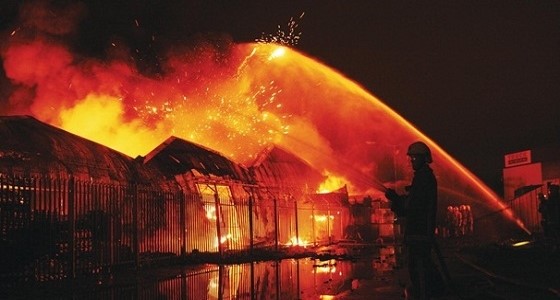While you may have heard horror stories of disastrous timber buildings billowing-up in flames, there have been heated discussions on how mass timber handles fire in comparison to steel and concrete.
In this guide, we put the record straight on timber and explore how it differs to other materials in intense heat.
Growing Fears
A recent article by Architects Journal spread new fears over timber-frame buildings after two consecutive fires in Canterbury and Wigan, earlier in July this year.
Understandably, this raised concerns and while fires are a serious risk – this isn’t limited to just timber constructions. John White, CEO of the Timber Trades Federation, commented on a Government Report that showed in 2009, roughly 800 fires were in timber frame buildings and 47,000 in other forms of construction.
“There is no greater likelihood of a fire in a timber frame building than in a building built with other mainstream materials,” White said.
Another survey found no evidence at all of the difference in the distribution of the size of fires, between timber-framed buildings and those without special construction, such as steel and concrete.
Handling the heat
Fire is, of course, the first concern that comes to mind with wood construction – there’s no denying that wood burns. And yet, there’s a great deal of evidence to suggest mass timber is actually safer in a fire than steel.
For example, in a fire, a thick plank of wood will char on the outside, sealing the interior and protecting it from damage. Wood burns slowly at approximately 0.02 inches/minute and the char created on the wood surface as it burns helps protect and insulate the unburnt wood below and maintain the structure.
This is because the build-up of carbon on the surface will limit the oxygen supply to the wood below and act as insulator. Therefore, the wood below the charred level will be cool and retain 85 to 90 per cent of its structural integrity.
Metal, on the other hand, begins to melt when it reaches a critical temperature (around 1300 degrees C) so will fail catastrophically. B.J. Yeh, from APA described steel being “like spaghetti” at this stage.
Concrete structures generally perform very well in fires. However, concrete is a complex material and its properties can dramatically change when exposed to high temperatures.
For example, while the compressive strength of concrete is quickly lost beyond extreme temperatures (anything above 600 degrees C), much like steel, the structural effectiveness isn’t affected until the bulk of the material reaches the same temperature.
Unlike steel, changes in the structural properties of concrete do not reverse themselves after a fire. Whereas as, when cooling, steel structures will often restore the material effectively to its original state.
Although still poorly-understood, a bizarre reaction of concrete exposed to high temperatures or fires is ‘explosive spalling’. This is where particles violently break-off of the concrete layers due a build-up of water-vapour pressure. This process is often assumed to occur only at high temperatures, yet it has also been observed in the early stages of a fire and even at temperatures as low as 200 degrees C.

CLT
When discussing mass timber, it’d be foolish not explore the benefits of Cross Laminated Timber Laminated (CLT) and it’s fantastic when it comes to resisting fire damage. Now, we know we’ve gone on a lot about CLT lately, but in comparison with steel or concrete, CLT really does blow them out of the water (or fire, in this case) – so we think it deserves its own sub-header.
For starters, it’s far cheaper and easier to assemble and more fire resistant, thanks to the way wood chars. Secondly, the thick layers of parallel beams atop one another that are perpendicularly, glued together creates a steel-like strength.
A great example of CLT in construction is the East London tower Stadthaus. The floors, ceilings, elevator shafts and stairwells are made entirely of CLT and when built in 2009, Stadthaus was by far the world’s tallest modern timber building. Architect, Anthony Thistleton described the construction to have “more in common with precast concrete than traditional timber frame design”.
Fire Retardant
While mass timber has an inherent resistance to fire, there are plenty of options out there to further enhance these properties. Making wood fire-retardant typically involves the application of a chemical formula that will protect the timber.
Alternatively, fire-resistant linings, such as plasterboard, can be used to protect the timber. And the spread of flame on exposed timber can be reduced by surface coating or impregnating chemical treatments.
To sum up
Although there are still some concerns surrounding fire in timber construction, people are far too quick to put timber in the firing-line. We think there is a need to distinguish between mass timber and timber structures when making the assumption that wood can’t handle the heat.
And we’re not alone in thinking wood is a fantastic, Alex de Rijke, of dRMM described wood to be the new concrete:
“Concrete is a 20th-century material. Steel is a 19th-century material. Wood is a 21st-century material” he said.
But what do you think? Is there any validity for these fears, or do you agree that timber has a rightful place on the pedestal in the future of high-rise constructions?
And, as always, if you’ve got any burning questions, be sure to get in touch with International Timber today or fire us a tweet – we always love to hear from you.
